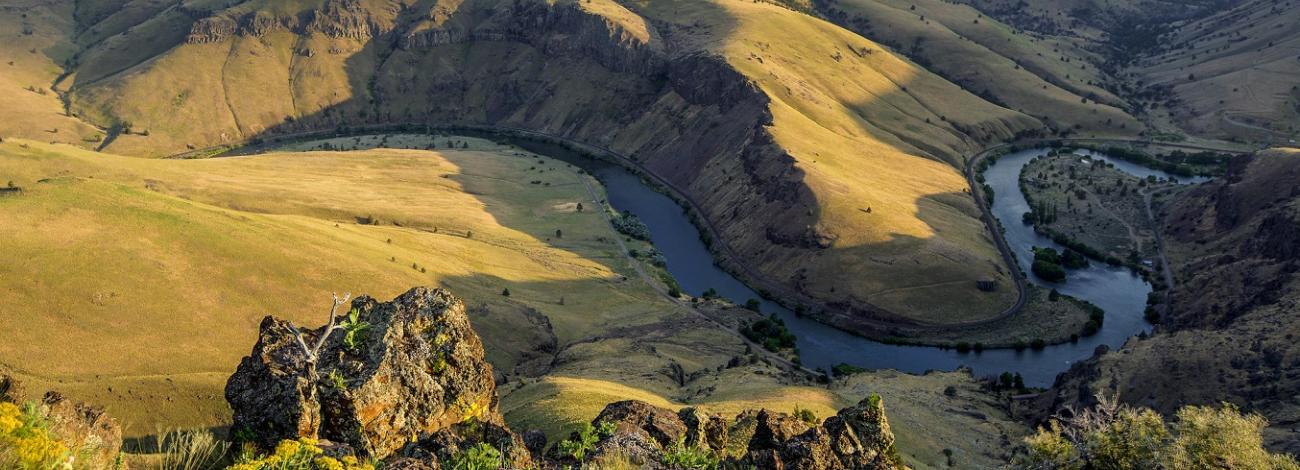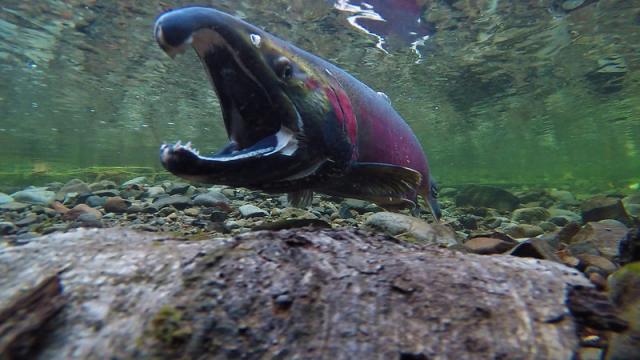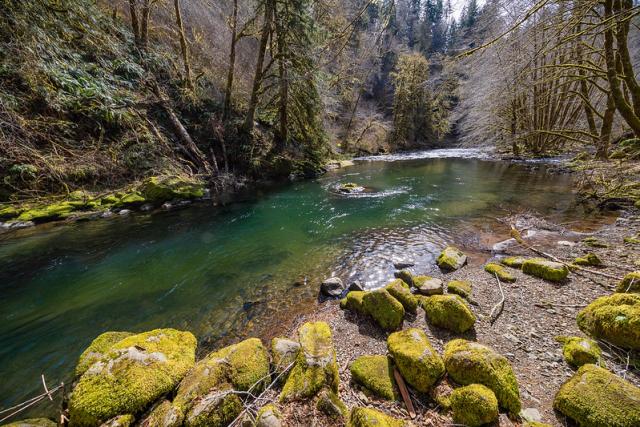
Oregon/Washington Aquatic Resources
In Oregon and Washington, the BLM manages a diverse array of aquatic habitats that support a wide variety of fish and wildlife species. We manage unique habitats ranging from temperate rainforests west of the Cascade Mountains to shrub/sage steppe of the high deserts in Eastern Oregon and Washington.
These habitats support a wide variety of fish and wildlife species. The diverse fish species range from the iconic salmon and steelhead, to prized rainbow and cutthroat trout. Oregon and Washington are also home to the Foskett speckled dace and Alvord chub. These native non-game fish are only found here in the Pacific Northwest.
In addition to fish, there are lesser-known aquatic species that are also important to the aquatic systems here in the Pacific Northwest, such as the American beaver, several freshwater mussels, frogs, and salamanders. These species depend upon healthy aquatic habitats for their survival and play a vital role in forming and maintaining healthy streams, ponds, and lakes.
Watershed Restoration
In Oregon and Washington, our Fisheries Biologists and Hydrologists work on restoration projects that address legacy watershed impacts from past land management practices. These practices included removing large wood and boulders from streams, installing culverts that caused barriers to fish migration, or removing all trees down to the water’s edge. These practices resulted in unintended negative consequences to fish populations and their habitat. Today, streams and riparian areas are well protected, and these impacts no longer occur on federally managed lands.
To correct those legacy impacts, aquatic staff routinely add logs, wood, or boulders to strategically slow the river water. Sometimes this requires heavy equipment like excavators, cable yarders, and large helicopters. These structures provide complex habitat where juvenile fish live and thrive. They also trap and store gravels that are important for fish spawning and insect production. BLM has also replaced hundreds of fish-barrier culverts with more “fish friendly” designs to allow all life stages of fish and other aquatic animals to pass freely.
BLM aquatic habitat restoration also comes in various other forms. Streamside areas may be revegetated or thinned, or invasive plant species and noxious weeds may be removed. Riparian fences can also be installed to better manage livestock grazing or actions may be taken to reduce sediment impacts from forest roads.


